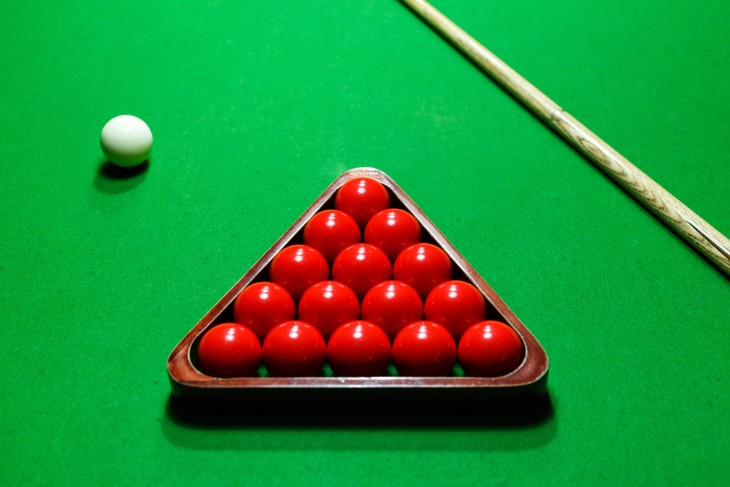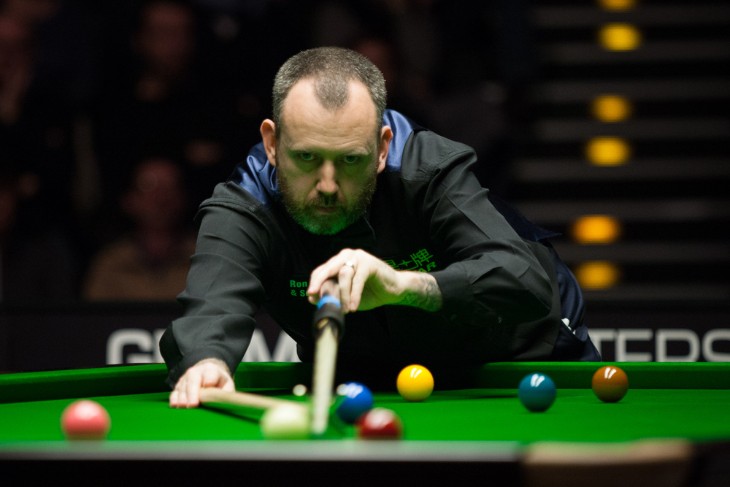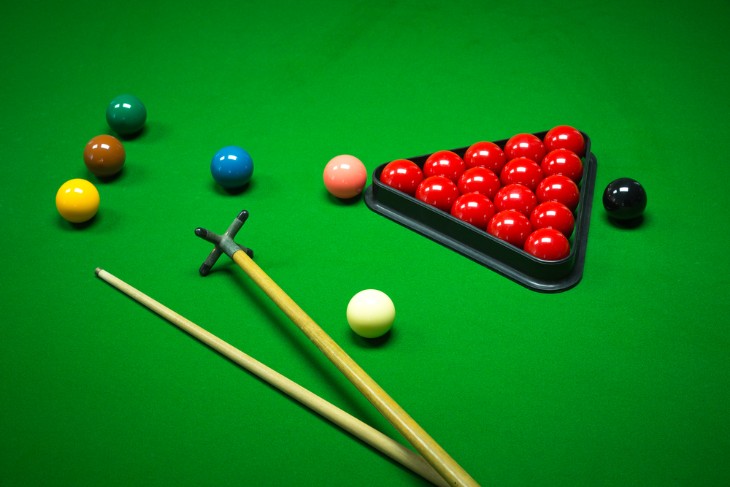Snooker, a game rich in history and skill, captivates players and spectators alike with its strategic depth and precision. Central to understanding this fascinating game is a seemingly simple question: "How many balls are on a snooker table?" This inquiry opens the door to not just a numerical answer but also a deeper appreciation of the game's nuances and traditions.
The Composition of a Snooker Table: Counting the Balls
Understanding the composition of a snooker table starts with counting the balls. In total, there are 22 balls used in a standard game of snooker. This set includes one white cue ball, fifteen red balls, and six other balls of different colours.
The fifteen red balls are the first ones players aim for in a game. They are lined up in a triangle at the top of the table. Each red ball is worth one point. Players try to pot these red balls first before moving on to the other coloured balls.
Apart from the reds, there are six coloured balls, each placed at specific spots on the table. These are the yellow, green, brown, blue, pink, and black balls. The yellow ball is worth two points, the green is worth three, the brown four, blue five, and pink six, and the black ball, which is the most valuable, is worth seven points. Players pot these coloured balls in a sequence, alternating with the reds.
The white cue ball is the ball players hit with their cues. It's not scored like the other balls, but it's crucial in the game. How players control and position the cue ball decides what shots they can take and how many points they can score.
In snooker, the way these balls are set up and used is key to how the game is played. The red balls start the game, and the coloured balls add to the player's score in a strategic way. The cue ball is the tool players use to pot these balls and build up their score.
The Red Balls: The Backbone of the Game
In snooker, the red balls are the starting point and backbone of every game. There are 15 red balls, each worth one point. Players focus on these balls first in the game. The way these red balls are played sets the tone for the entire frame.
At the start of a frame, the red balls are arranged in a triangle at the top of the table. This setup is crucial. It decides how the game begins and what strategies players can use. The first shot, called the break-off, often scatters these reds across the table. How they spread affects the whole game.
Players aim to pot these red balls first. After potting a red, they then go for a coloured ball. This pattern continues – pot a red, then a colour. The red balls are like stepping stones in the game. They lead players to score more points by potting the higher-value coloured balls.
Potting red balls is also about strategy. Players try to pot reds in a way that sets them up for the next shot. They think about where the cue ball will end up after each shot. Good positioning of the cue ball makes it easier to keep potting reds and colours.
The number of red balls on the table also changes the game as it goes on. As players pot these reds, there are fewer options for the next shots. This makes the game more challenging and exciting. Players need to plan their moves carefully as the number of reds decreases.
The Coloured Balls: Adding Layers of Complexity
After the red balls in snooker, come the coloured balls, each adding a layer of complexity to the game. There are six coloured balls: yellow, green, brown, blue, pink, and black. Unlike the reds, each coloured ball has a different point value, ranging from two to seven points.
The yellow ball is worth two points, the green three, the brown four, the blue five, the pink six, and the black, the most valuable, is worth seven points. These coloured balls are not all potted at once. Instead, a player pots a coloured ball after each red ball. This alternating between reds and colours is a key part of snooker strategy.
Each coloured ball also has a specific spot on the table. For example, the black ball sits at one end of the table, and the pink ball is placed in the middle. The positions of these balls affect the game. Players plan their shots around where these balls are and how they can put them after a red.
Potting coloured balls is about scoring high points. Players aim to pot the more valuable colours, like black and pink, to build a big score. But this isn't always easy. These balls might be in difficult positions or blocked by other balls. So, players need skill and strategy to pot them.
The game changes once all the reds are potted. Then, players pot the coloured balls in a specific order, from least to most valuable. This part of the game requires precise skill. Players must pot each ball and position the cue ball for the next shot. The game ends when all the balls are potted, with the black ball being the final target.

The Role of the Cue Ball: The Player's Instrument
The cue ball in snooker is more than just another ball on the table; it's the player's main tool. Unlike the other balls, the cue ball isn't potted for points. Instead, players use it to hit the other balls. How well a player controls the cue ball often decides their success in the game.
Controlling the cue ball is about accuracy and planning. Players hit the cue ball with their cue stick. The aim is to hit it just right, so it then hits other balls into the pockets. But it's not just about potting balls. Players must also think about where the cue ball will stop. Good positioning of the cue ball sets up the next shot.
Mastering the cue ball takes skill. Players use different techniques to control their speed and direction. They can make it spin, slow down, or bounce off cushions. This control allows them to take on difficult shots and pot balls that might seem out of reach.
The cue ball's role changes throughout the game. At first, when there are many balls on the table, players use the cue ball to break clusters and open up the game. Later, when fewer balls are left, they use them to carefully position for higher-value colours.
Sometimes, controlling the cue ball means playing defensively. Players might choose to hit the cue ball in a way that makes it hard for the next player to pot a ball. This is called a 'safety shot'. Safety shots are crucial in snooker and can turn the game in a player’s favour.
The Significance of Ball Placement and Strategy
In snooker, how the balls are placed on the table is crucial. It affects the game's flow and the players' strategies. Each ball's position can create opportunities or challenges for the players. Understanding ball placement is key to mastering snooker.
The game begins with the balls set in specific positions. The red balls are in a triangle at the top, and the coloured balls are in set spots. This initial setup is important. It decides the first few shots and starts the strategy play. Players look at this setup and plan their moves. They think about which balls they can pot and how they can control the cue ball.
As the game goes on, the placement of the balls keeps changing. Each shot moves balls around the table. Good players use this to their advantage. They pot balls and also move the cue ball to positions that are good for the next shot. They think a few shots ahead, planning how the balls will spread out.
Sometimes, the balls might cluster together or block each other. This makes potting them harder. Players then need to decide whether to break the cluster or play a different shot. These decisions are a big part of snooker strategy.
Defensive play also comes into the strategy. If a player can't pot a ball, they might play a shot that leaves the ball in a hard position for the next player. This is about thinking not just about your own game, but also about making it difficult for your opponent.
Scoring in Snooker: How Ball Values Impact the Game
Scoring in snooker is directly linked to the values of the balls potted. Each ball has a specific point value, and players aim to score the most points to win a frame. Understanding how these values impact the game is key to grasping Snooker's scoring system.
The red balls, which are the most numerous, are each worth one point. Players start with these, potting as many as they can. Because there are 15 red balls, they can score a total of 15 points from them. Potting red balls is the first step in building a score.
After potting a red ball, players must pot a coloured ball. These coloured balls have higher values – from two points for the yellow ball up to seven points for the black ball. The strategy often involves potting higher-value colours like black or pink balls, as this increases the player's score more quickly.
A key part of scoring in snooker is the break. This is the total points a player scores in one turn at the table. A high break usually involves potting several reds and colours in succession. High breaks are a sign of skill and can quickly change the game's outcome.
Once all the reds are potted, players pot the coloured balls in a specific order, from lowest to highest value. This part of the game is critical. Players can score a lot of points by potting these balls in sequence.
The maximum score in a single turn, known as a maximum break or a '147', involves potting all reds with blacks, followed by all the colours in order. This is rare and shows a high level of skill.
The Tactical Game: Utilising the Balls to Outplay Opponents
In snooker, using the balls tactically is a key way to outplay opponents. It's not just about potting balls; it's also about making it tough for the other player to score. This tactical side of snooker involves thinking ahead, playing smart, and sometimes being defensive.
One tactic is to pot balls in a way that sets up the next shot. Good players think several moves ahead. They pot a ball and also position the cue ball for an easier next shot. This planning helps them keep control of the table and score more points.
Another tactic is to play safe shots. If a player can't pot a ball easily, they might hit the cue ball so it ends up in a place that’s hard for the opponent to make a shot. These safety shots are about defence. They help players stay in the game, even when they don't have a good chance to score.
Controlling the pace of the game is also tactical. Sometimes players slow the game down to think more or make the opponent impatient. Other times, they speed up to keep the pressure on. Controlling the pace can affect how the opponent plays.
Using the balls to block paths is another strategy. Players can pot a ball in such a way that it leaves other balls blocking the opponent's shots. This makes it harder for the opponent to pot their next ball and can give the player an advantage.

The Evolution of the Game: Historical Context of Snooker Balls
The game of snooker has a rich history, and the evolution of snooker balls is a big part of this story. Over the years, the number, type, and even material of the balls have changed, shaping the game we know today.
Snooker started in the late 19th century. Back then, the game was different. It had fewer balls, and they were made of different materials. The early balls were often made from wood or ivory. These materials weren't perfect. They could be inconsistent and didn't always roll smoothly.
As the game grew, so did the number of balls. Initially, snooker had fewer coloured balls. The game evolved to include more colours, each with its value. This change made snooker more complex and interesting. It added more strategy to the game, as players had to think about which balls to pot for the most points.
The material of the balls also changed. Manufacturers started using synthetic materials like phenolic resin. These new balls were more consistent and durable. They rolled more smoothly and evenly, making the game more fair and enjoyable.
The size of the balls has been consistent in modern times, but the quality has improved. High-quality balls are now used in professional games. These balls are very precise and help players make accurate shots.
Equipment and Quality: The Impact on Gameplay
The quality of snooker equipment, especially the balls, has a big impact on how the game is played. High-quality balls and equipment make the game fairer, more enjoyable, and more skilful.
Firstly, the balls need to be the right size and weight. This consistency is crucial. If the balls are off, even by a little, it can affect how they move and react on the table. Professional snooker balls are made to exact standards. This ensures that every ball behaves the same way, making the game fair and predictable.
The smoothness and polish of the balls also matter. Well-made balls have a smooth surface that lets them roll evenly on the table. This smoothness helps players make precise shots. If the balls are rough or uneven, they might roll unpredictably, which can ruin the game's skill element.
The material of the balls is another key factor. Modern snooker balls are usually made from phenolic resin. This material is hard and durable. It means the balls don't chip or wear down easily. This durability is important, especially in professional games, where the balls are used a lot.
The quality of the table plays a role too. A good snooker table has a flat, even surface and well-maintained cushions. These features help the balls move smoothly and predictably. They allow players to use their skills fully, without worrying about the equipment affecting their game.
Final Takeaway
The count of snooker balls is more than just a number. It shapes the entire game, adding strategy and skill. With 15 red balls, six coloured balls, and the crucial cue ball, each piece plays a key role. The red balls start the action, the coloured balls boost scores, and the cue ball is the player's main tool.
Together, they create a game that is both challenging and exciting. The quality of these balls and the equipment also impacts the game significantly. They ensure fairness and allow players to showcase their true skills.
Snooker is a game of precision, strategy, and mental sharpness, all reflected in the simple yet significant count of its balls. Understanding this count is the first step in appreciating the deep and skilful world of snooker.
For more information:




.webp)


 (1).webp)




















